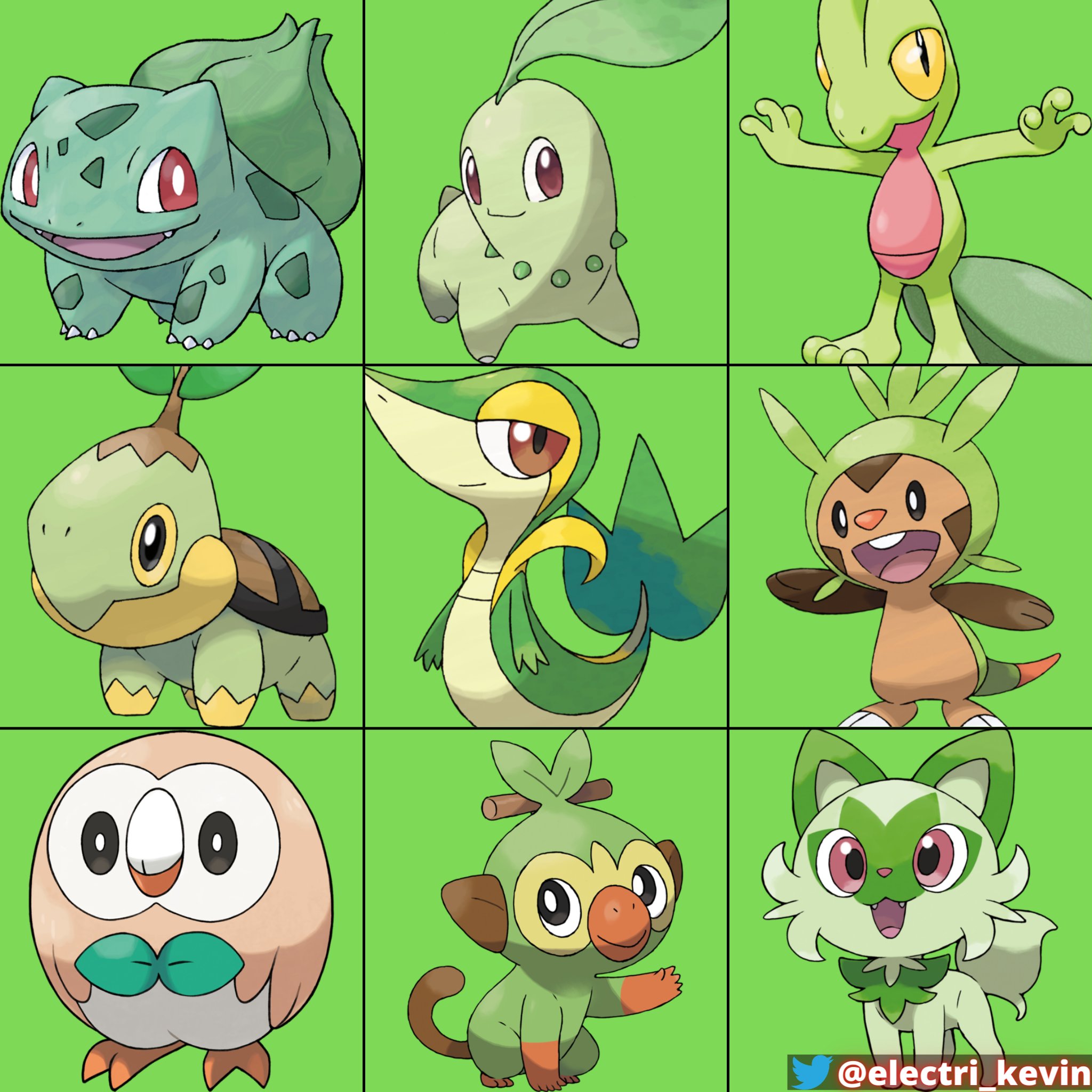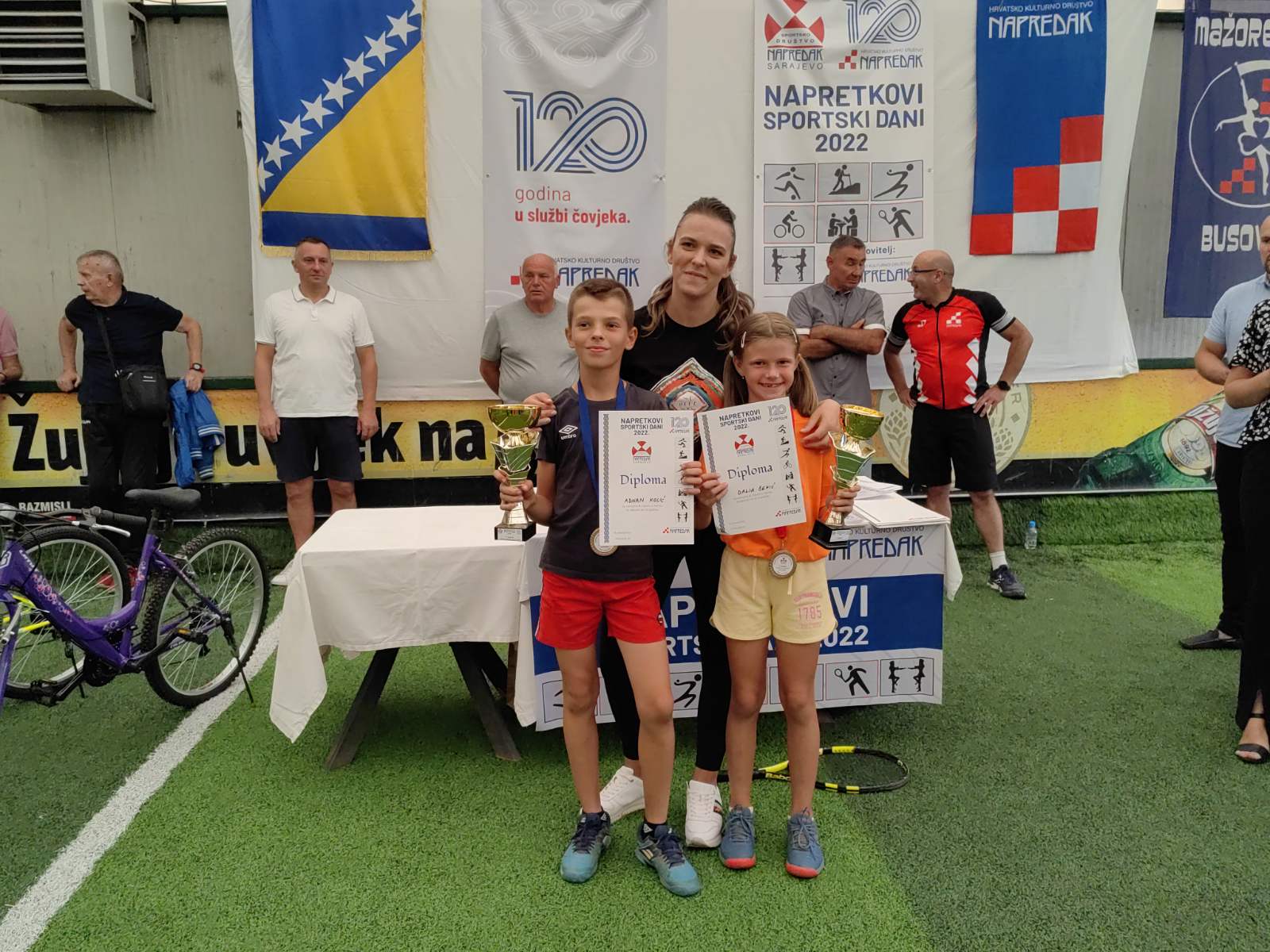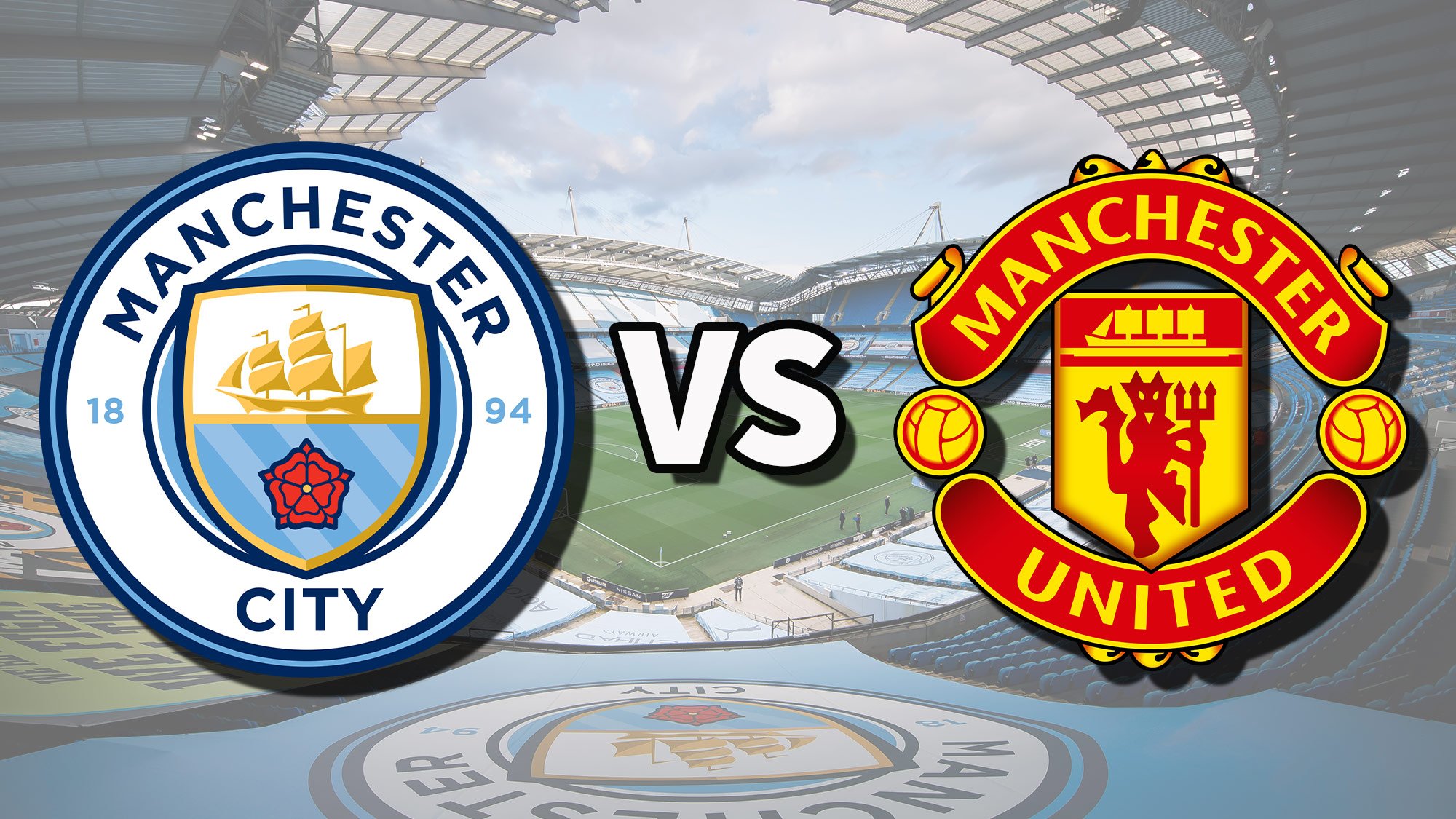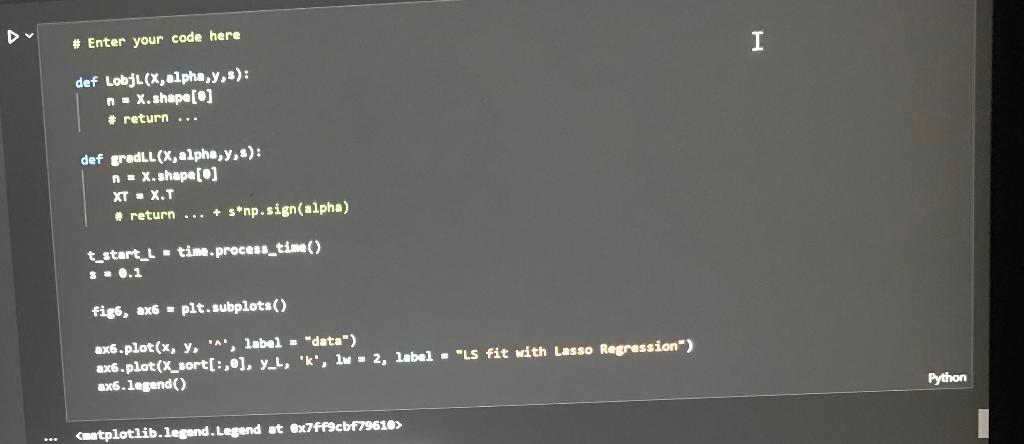Top Grass-Type Starters In Pokémon: Strengths, Weaknesses & Strategies

Table of Contents
Bulbasaur (Gen 1) – A Classic Choice
Bulbasaur, the iconic Grass/Poison starter from Generation I, remains a popular choice for many players. Its balanced stats and access to diverse movepools make it a versatile Pokémon, even in the early game.
Strengths:
- Excellent Early-Game Bulk: Bulbasaur boasts high HP and a decent Defense stat, allowing it to withstand many early-game attacks. This makes it a reliable tank and a good choice for newer trainers.
- Powerful Grass and Poison-Type Moves: It learns a variety of effective Grass and Poison-type moves, including Vine Whip, Razor Leaf, Sleep Powder, and Poisonpowder, providing options for both offensive and defensive play.
- Effective Against Ground Types: Its dual typing gives it a significant advantage against Ground-type Pokémon, a common threat early in the game.
- Venusaur's Power: Its final evolution, Venusaur, gains access to incredibly powerful STAB (Same-Type Attack Bonus) moves like Giga Drain and Sludge Bomb, making it a formidable force later in the game.
Weaknesses:
- Vulnerability to Fire, Ice, Flying, Poison, and Bug: Bulbasaur’s dual typing leaves it vulnerable to a wide range of common attack types, requiring careful team composition and strategic item usage.
- Low Speed: Bulbasaur's low Speed stat can be a major drawback, often leaving it outsped and potentially KO'd before it can act.
- Struggles Against Physical Attackers: While its defense is decent, Bulbasaur can still struggle against powerful physical attackers.
Strategies:
- Control the Pace: Utilize status moves like Sleep Powder to control the tempo of battles, giving Bulbasaur an advantage against faster opponents.
- Maximize Bulk: Invest in maximizing Bulbasaur's bulk using EVs (Effort Values) in HP and Defense, and consider using defensive items like Leftovers or Berries.
- Type Coverage: Ensure your team covers Bulbasaur's weaknesses with Pokémon that can effectively counter Fire, Ice, Flying, Poison, and Bug types.
Chikorita (Gen 2) – The Patient Powerhouse
Chikorita, the Grass-type starter from Generation II, takes a different approach compared to Bulbasaur. While slow to start, its potential for high Special Attack makes it a rewarding choice for patient players.
Strengths:
- High Special Attack: Chikorita has a high Special Attack stat, making it a potent special attacker once it evolves into Meganium.
- Devastating Solar Beam: It learns Solar Beam, a powerful STAB move that deals massive damage.
- High HP Evolution: Meganium boasts high HP and Special Attack, making it a strong special attacker with decent bulk.
- Synergistic Support: Chikorita works well with supporting Pokémon that can boost its Special Attack or protect it from physical threats.
Weaknesses:
- Low Early-Game Stats: Chikorita has low Speed and Defense early on, making it incredibly vulnerable to physical attacks.
- Slow Start: Chikorita's slow start can make the early game challenging.
- Type Vulnerability: It shares the common Grass-type weakness to Fire and Ice-type moves.
Strategies:
- Special Attack Focus: Invest heavily in Special Attack EVs and use Special Attack-boosting items.
- Speed Training: Prioritize training Chikorita's Speed stat to mitigate its biggest weakness.
- Team Support: Use faster Pokémon to protect Chikorita and create opportunities for it to attack.
Treecko (Gen 3) – The Agile Grass-type
Treecko, the Grass-type starter from Generation III, is a speedy and powerful attacker. Its high Speed stat makes it a valuable asset for speed-based strategies.
Strengths:
- High Speed and Special Attack: Treecko boasts incredible Speed and Special Attack, allowing it to outspeed and overwhelm many opponents.
- Powerful Offensive Moves: It learns powerful physical and special Grass-type moves, making it a versatile attacker.
- Fast Evolution Line: Treecko evolves into Grovyle and then Sceptile, maintaining its speed and offensive capabilities.
- Speed-Based Strategies: Treecko excels in speed-based strategies, striking first and dealing significant damage.
Weaknesses:
- Low HP and Defense: Treecko's lower HP and Defense make it vulnerable to strong physical attacks, requiring careful management.
- Fragile Nature: A single critical hit could easily knock out Treecko if not carefully managed.
- Strategic Item Usage: Using items that boost its HP or Defense are crucial to make it a stronger Pokémon.
Strategies:
- Prioritize Speed: Maximize Treecko's Speed with EVs and speed-boosting items.
- Powerful Attacks: Focus on using moves that deal significant damage to quickly eliminate opponents.
- Strategic Item Choices: Utilize items that enhance its Speed and/or bulk to improve its survivability.
Turtwig (Gen 4) – The Defensive Grass-type
Turtwig, from Generation IV, represents a more defensive Grass-type starter. Its high Defense and HP make it a resilient tank that can absorb hits and wear down opponents.
Strengths:
- High Defense and HP: Turtwig boasts exceptional Defense and HP, allowing it to withstand significant damage.
- Reliable Tank: Turtwig excels at absorbing hits, providing opportunities for teammates to attack.
- Powerful Evolution: Torterra, its final evolution, possesses impressive bulk and access to powerful Grass-type attacks.
- Balanced Team Composition: Torterra fits well into a balanced team, acting as a reliable wall and supporting offensive Pokémon.
Weaknesses:
- Low Speed and Special Attack: Turtwig's low Speed and Special Attack can be a significant disadvantage in many battles.
- Vulnerable to Special Attacks: While it resists physical attacks, Turtwig is weak to special attacks.
- Requires Support: Turtwig often needs support from faster teammates to overcome its low Speed.
Strategies:
- Defensive Item Usage: Use defensive items like Leftovers, Rocky Helmet, or Eviolite to maximize its defensive capabilities.
- Support Moves: Utilize support moves like Protect or Synthesis to increase its survivability and control the pace of battles.
- Team Synergy: Pair Turtwig with faster Pokémon to compensate for its lack of speed and create offensive opportunities.
Conclusion:
Choosing the best Grass-type starter Pokémon ultimately depends on your preferred playstyle and overall team strategy. Each starter – Bulbasaur, Chikorita, Treecko, and Turtwig – offers a unique set of strengths and weaknesses. By understanding these aspects and employing appropriate strategies, you can transform any Grass-type starter Pokémon into a powerful asset on your Pokémon journey. So, choose your favorite Grass-type starter Pokémon and embark on your adventure!

Featured Posts
-
 Alkaras Kako Inspirise Mlade Tenisere
May 14, 2025
Alkaras Kako Inspirise Mlade Tenisere
May 14, 2025 -
 Man Utds Exciting New Recruit The England Stars Brother
May 14, 2025
Man Utds Exciting New Recruit The England Stars Brother
May 14, 2025 -
 Swiss Franc Surge Eurovision Fans Face Higher Costs
May 14, 2025
Swiss Franc Surge Eurovision Fans Face Higher Costs
May 14, 2025 -
 Company News Highlights Fridays Top Stories At 7 Pm Et
May 14, 2025
Company News Highlights Fridays Top Stories At 7 Pm Et
May 14, 2025 -
 Dozens Of Eurovision Alumni Demand Israels Removal From 2025 Contest
May 14, 2025
Dozens Of Eurovision Alumni Demand Israels Removal From 2025 Contest
May 14, 2025
Latest Posts
-
 10 Lingering Questions In Ted Lassos Story
May 14, 2025
10 Lingering Questions In Ted Lassos Story
May 14, 2025 -
 Ted Lasso 10 Story Arcs That Need Closure
May 14, 2025
Ted Lasso 10 Story Arcs That Need Closure
May 14, 2025 -
 Unresolved Ted Lasso Plotlines We Need Answers To
May 14, 2025
Unresolved Ted Lasso Plotlines We Need Answers To
May 14, 2025 -
 Mission Impossible Dead Reckoning Tom Cruises Farewell A Trailer Deep Dive
May 14, 2025
Mission Impossible Dead Reckoning Tom Cruises Farewell A Trailer Deep Dive
May 14, 2025 -
 Dead Reckoning Part Two Trailer Speculating On Tom Cruises Future In The Mission Impossible Franchise
May 14, 2025
Dead Reckoning Part Two Trailer Speculating On Tom Cruises Future In The Mission Impossible Franchise
May 14, 2025
